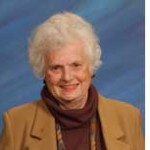-First in a series-
By Natasha Josefowitz, Ph.D.

LA JOLLA, California — This is part one of a five-part series on the emotional states of grief. The poems are excerpted from my book, Living Without the One You Cannot Live Without: Hope and Healing after Loss.
Everyone deals with pain differently. What helps me is trying to understand it. When my husband died, the pain was so intense that I wondered whether I would survive it. I did survive and decided to learn and write about the pain of loss and the process of healing. I used my own experience after the death of my husband four years ago, my cousin and my brother two years ago, and my son last year. I also researched the literature.
In order to better understand the grieving process and to discover if my experiences were universal, I talked informally to about fifty people experiencing loss and then interviewed in-depth twelve widows and twelve widowers. I used a questionnaire as a starting point, but I left it open-ended to capture more of their experiences. My criteria was that the death of the spouse should have occurred recently enough so that the memories were still fresh, and often still raw. The ages I chose were between 60 and 90 because this group tended to have had a long-term marriage and had parents who were no longer living and grown children—who had their own lives and were often living far away and therefore not available on a ongoing basis. This group lived alone with fewer resources than those who experience the death of a spouse in an earlier part of life. (Younger people dealing with loss have very different issues—they usually have children at home, parents that are supportive, friends and relatives, and often a job or regular activities that involve a community of like-minded people.) In the older group, issues such as health and isolation were more prevalent, many friends and relatives had died or were not available due to problems with transportation.
Even though people grieve in many individual ways and need different types of support—to wit, the activities that helped some were exactly what distressed others—there are common feelings and behaviors that most people exhibit in a continuum. I found that emotional states after the loss of a spouse had enough similarities that they were worth examining further.
Although I have attempted to categorize these in some sort of sequence, not all people went through these emotional states nor did they all encounter them in the order I propose. At times, many reverted to a previously experienced state before moving on. These emotional states, painful as they feel, are the steppingstones to healing.
Pre-Grief
Still at Hospice
We’re still here because
his back is still hurting
he has prostate cancer
metastasized to his bones
so we’re here to get some relief
but the relief comes at a cost
opiates put you to sleep
so he lies there, only half-conscious
and as the hours become days
and the pain is only relieved
by increasing the medications
the days are turning into weeks
we came here, believing he would get better
and come home
but instead
he only came home to die
in a different hospital bed
the one in our continuing care unit
two floors up from our apartment
in our retirement community
he can see the ocean from his window
and hear the waves
hospice people come here, too
adjusting the pumps
the nurses are at his bedside
day and night
at first he has trouble talking
then swallowing
then moving
then breathing
and finally
living
What I call “Pre-Grief” only concerns those whose spouses had been ill for weeks, months, or even years. Those who are caregivers often reduce or drop out of their usual activities and stopped going out with friends. After the spouse dies, it is very difficult for them to reenter the social scene. They are grieving—even if relieved after a long illness—and initiating contact feels daunting. They feel disconnected and may need to ask trusted friends to help by organizing outings and events for them to participate in as a way to start reconnecting.
*
Copyright © 2014. Natasha Josefowitz. All rights reserved. This article also appeared in the La Jolla Village News. The writer may be contacted via natasha.josefowitz@sdjewishworld.com